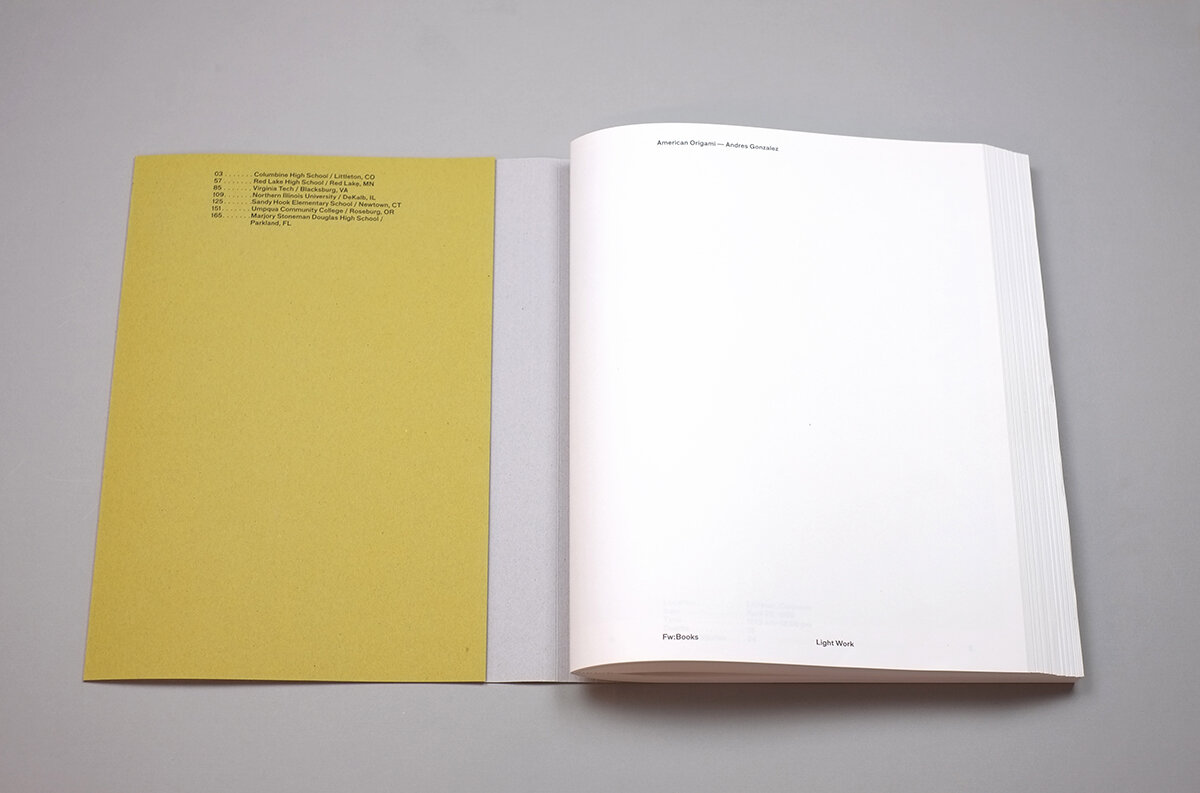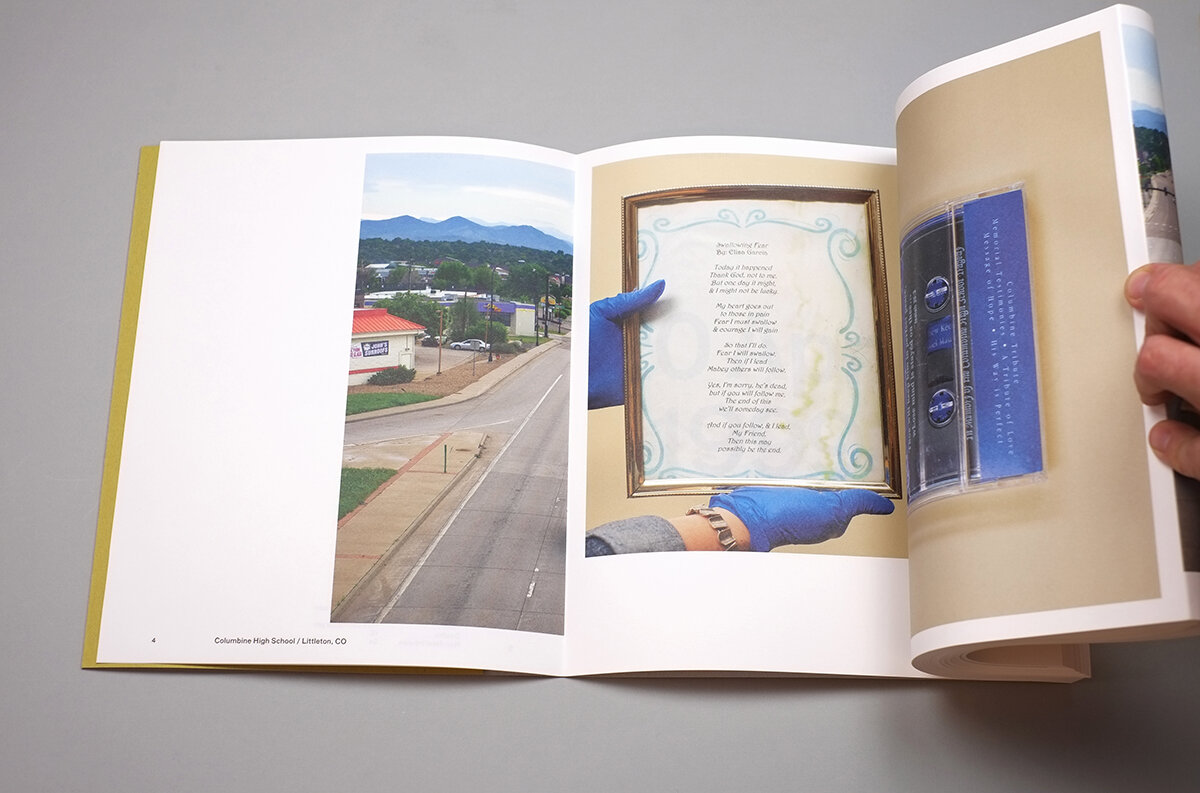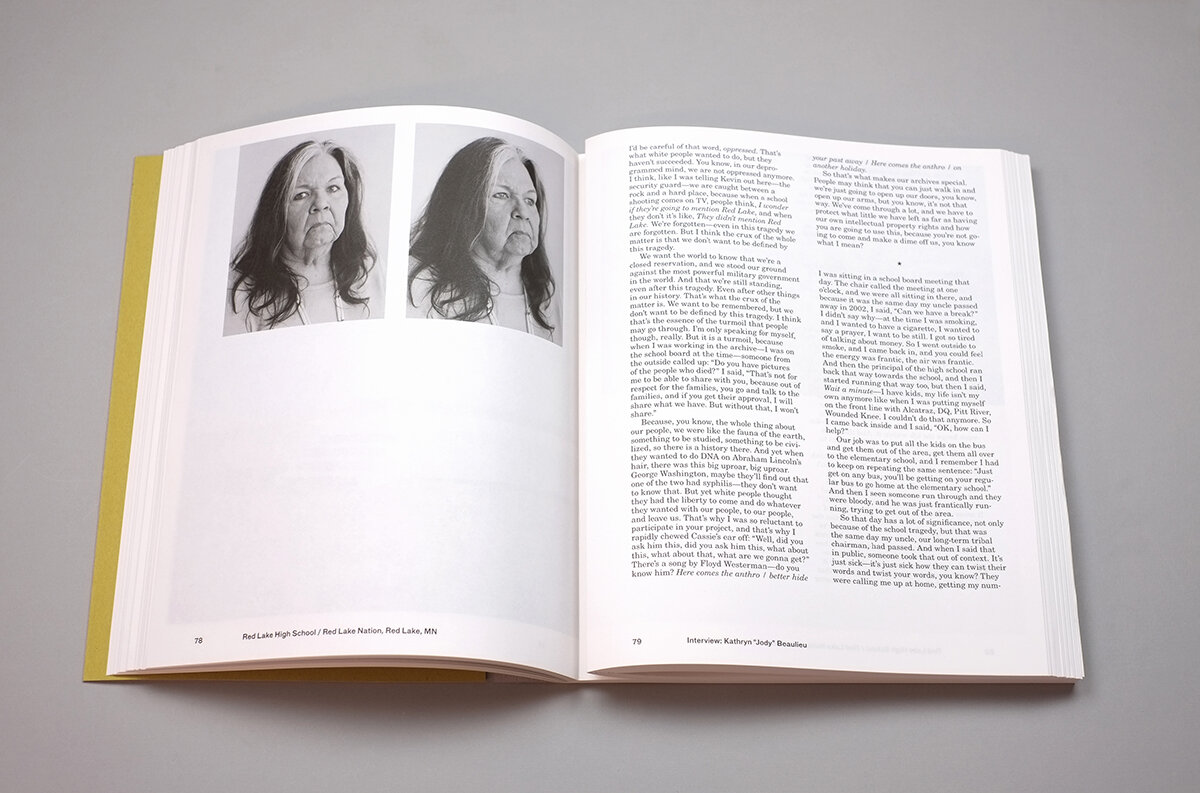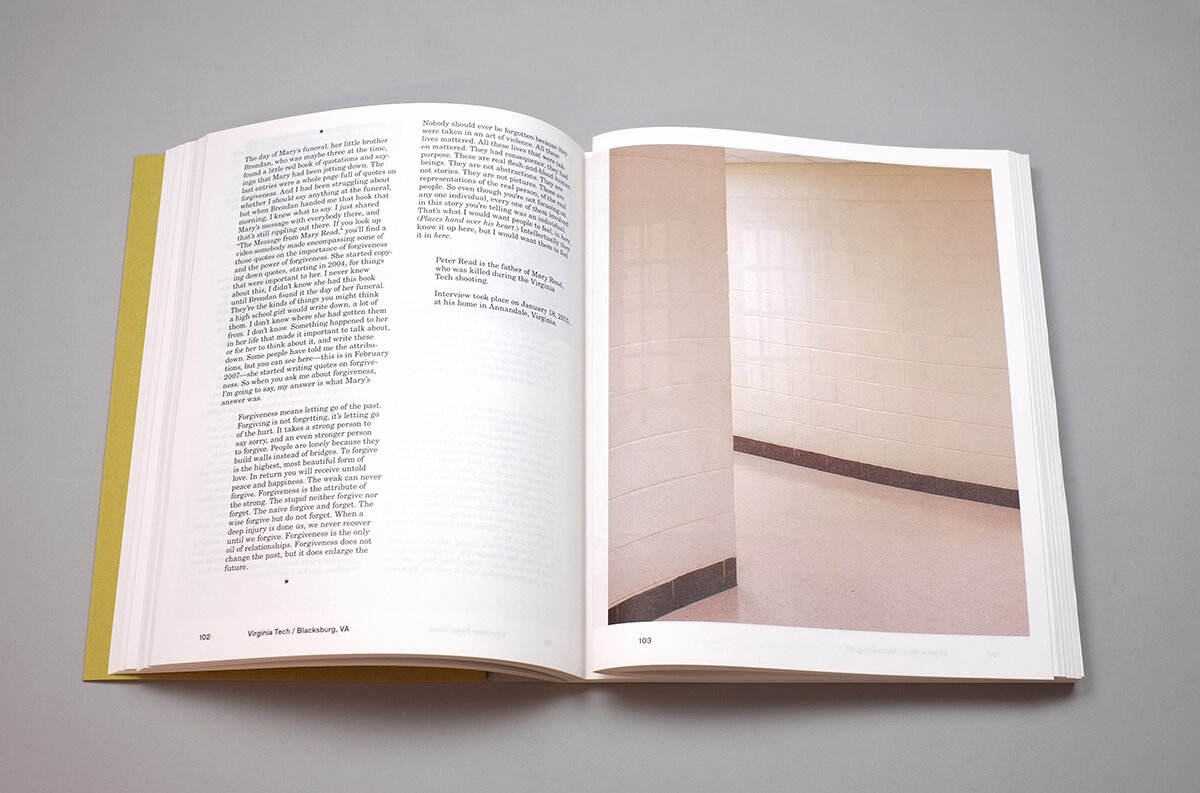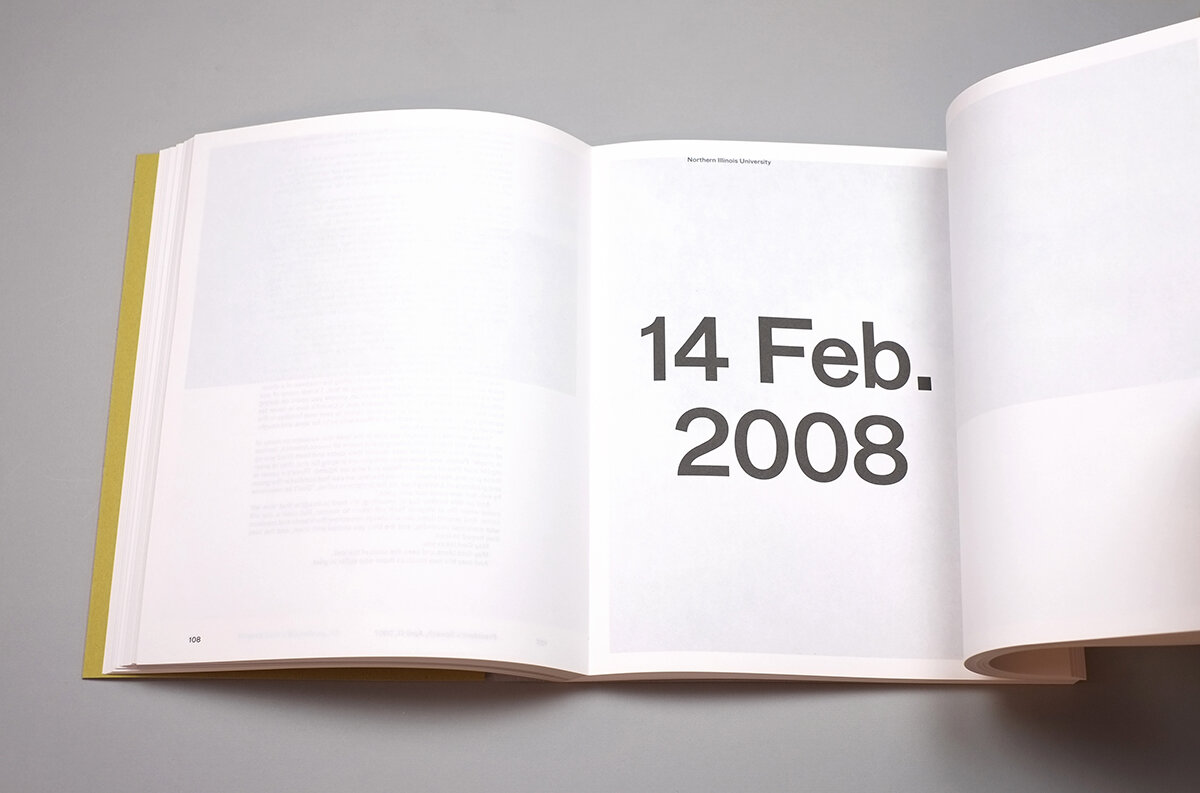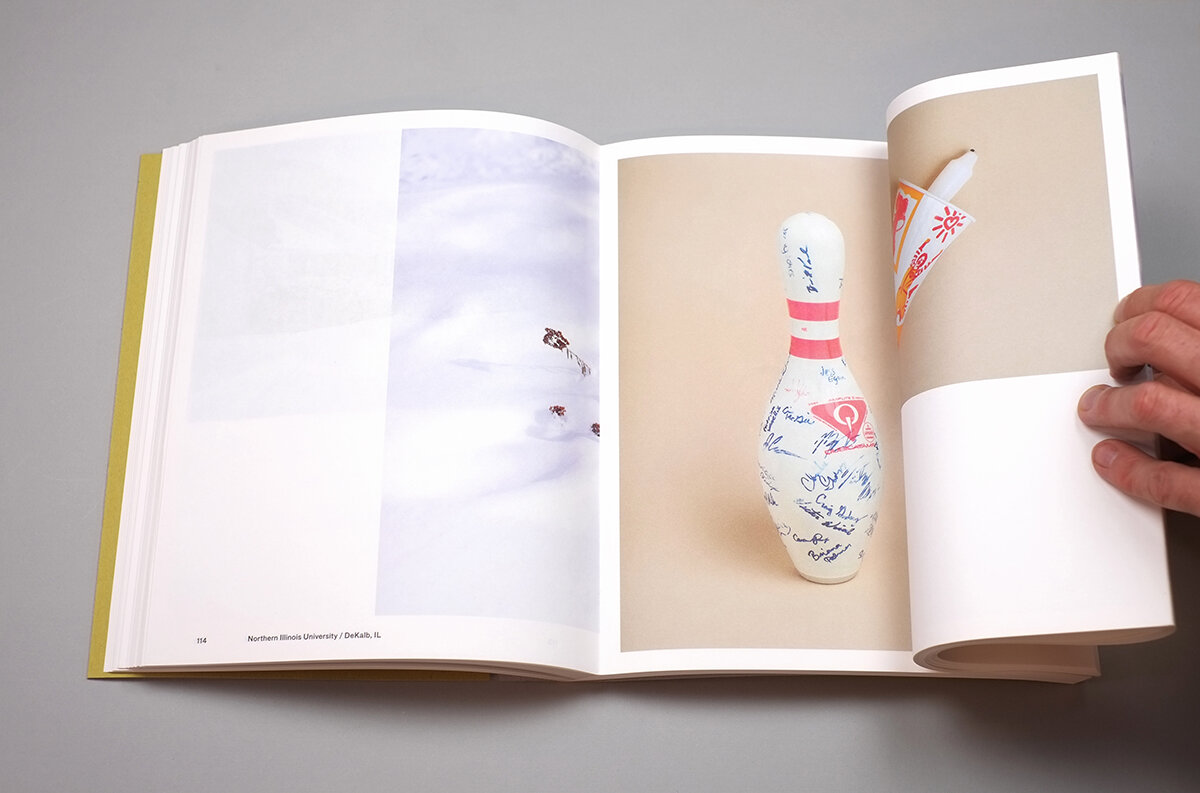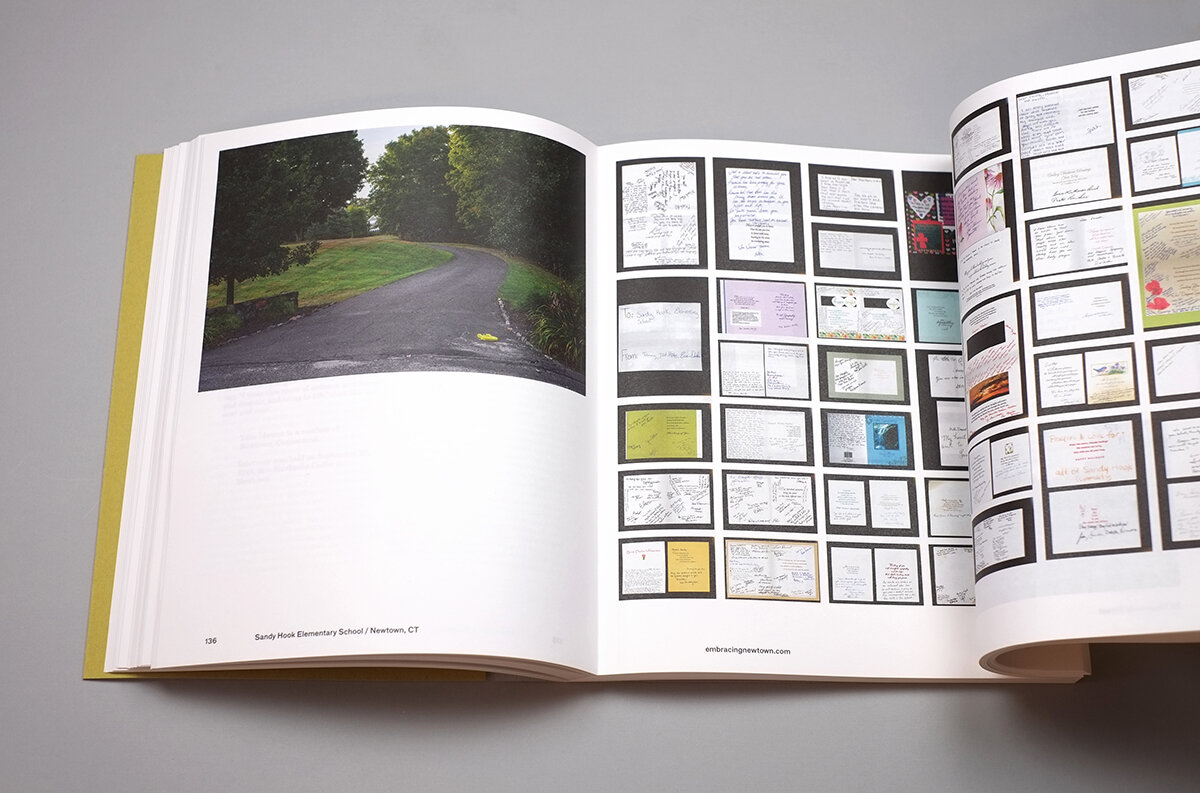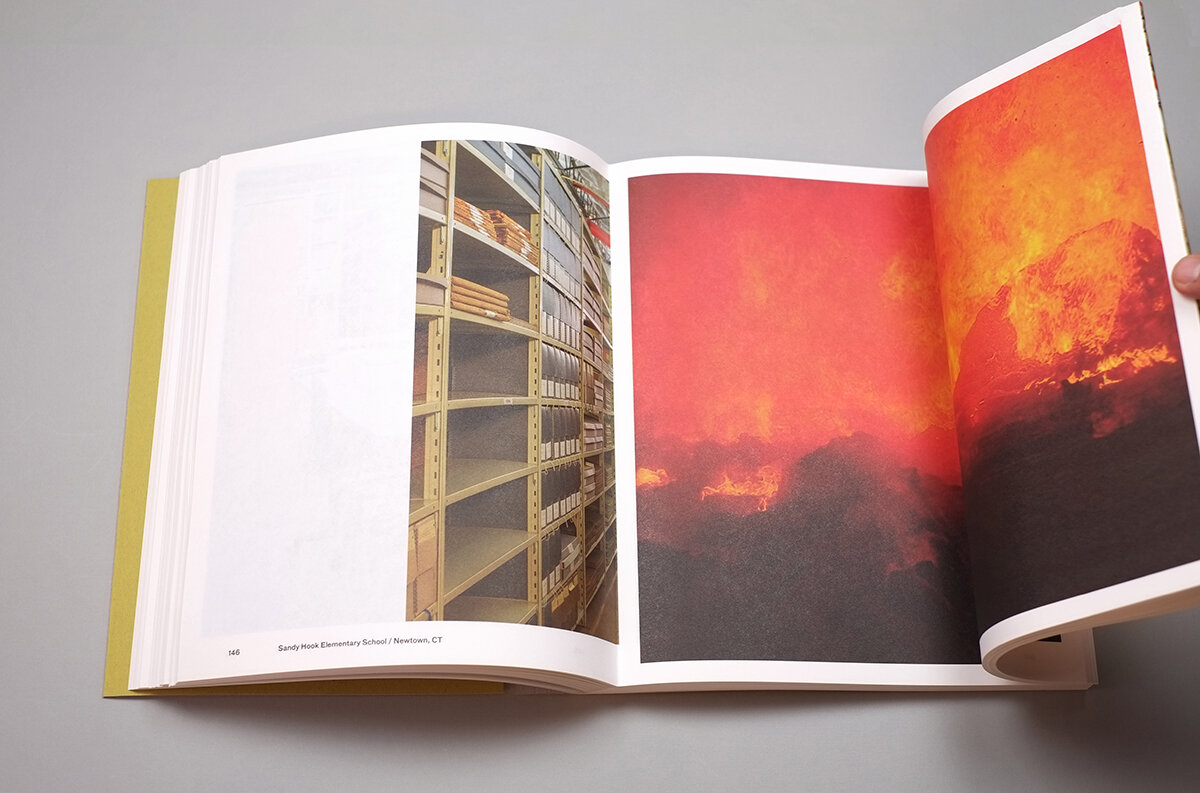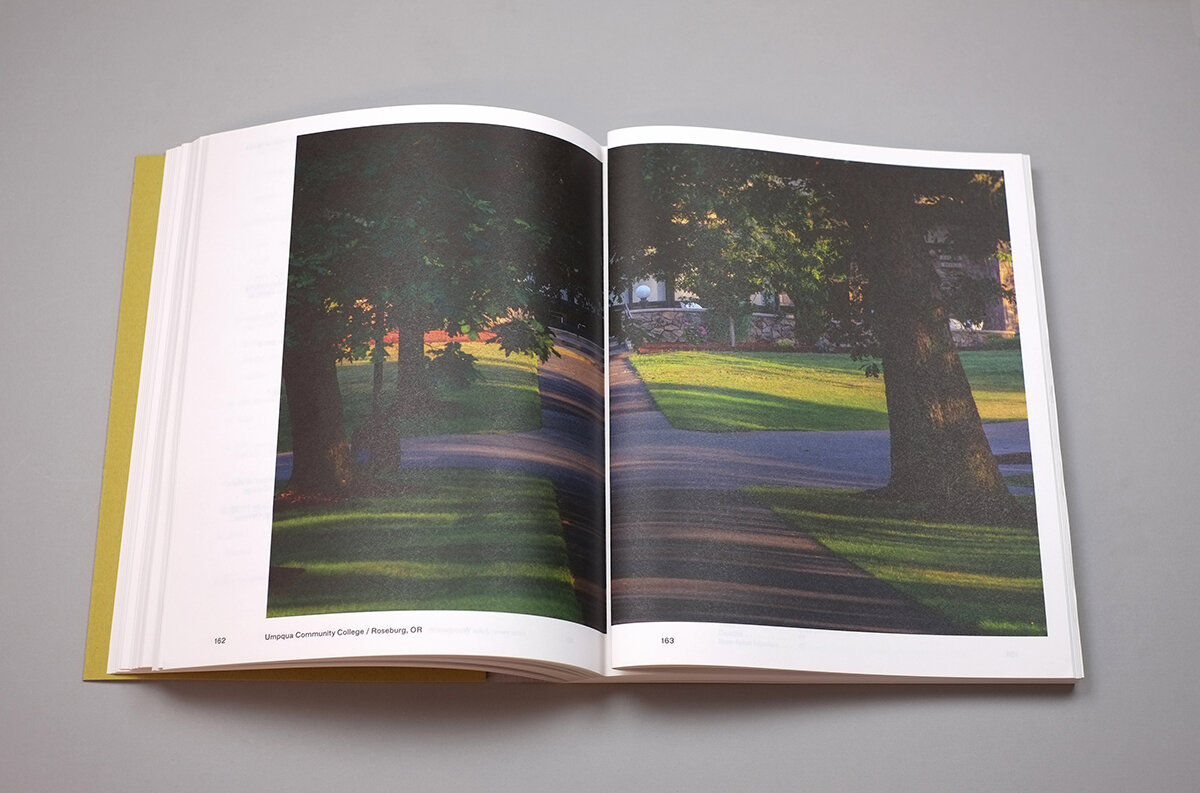Book Review: “american origami” by andres gonzalez
By Kelli Connell | Feburary 19, 2020
Co-published by Fw:Books and Light Work, 2019
Softcover / 384 pages
An overstuffed file folder sits on the table beside me. Its contents make the folder bulge, the white tips of pages cascade out the top. The address-sized label on the outside reads:
AMERICAN ORIGAMI – ANDRES GONZALEZ
Littleton / Red Lake / Blacksburg / DeKalb /
Newtown / Roseburg / Parkland
Andres Gonzalez has culled through thousands of documents, artifacts, news stories, and personal memorabilia for American Origami. He has spent countless hours in the neighborhoods where these tragedies have occurred, photographing and talking with residents. The result of his dedication calls to mind an image of the most diligent of detectives, who pours over evidence, day in and day out, looking for clues and answers, only to find more questions. Gonzalez worked for six years on this project and the resulting publication presents us with seven case studies spanning two decades.
Black text on a stark white page introduces each case with the following information: Name of High School, Location, Date, Time, Deaths and Non-fatal injuries. Opening the cover, we confront the first case:
Columbine High School
Location……………….Littleton, Colorado
Date……………………..April 20, 1999
Time…………………….11:19am – 12:08pm
Deaths………………….15
Non-fatal injuries….24
American Origami is not bound at its center. The pages have been carefully folded; the finished structure a beautiful nest of pages. This seemingly complicated design allows for hidden material to be revealed by lifting the bulk of pages from the unbound center. As Gonzalez says on his website,
“The project includes first person interviews, forensic documents, and press materials, as well as original photographs and texts. The varied elements repeat and fold into each other, illuminating relationships between myth-making, atonement, and collective healing. Bound in a unique way, the book creates a parallel world of the past and the present, showing the silenced landscape interwoven with the personal artifacts created by those left behind.”
In the Columbine section, we see an expansive photograph of the town; its strip malls and fast food chains foreground a sweep of mountains. Photographs of bushes and trees, houses and walkways make me wonder, “Whose house is this? One of the boys who killed his classmates? One of the victims? Was this the path where they last walked to school?” Continuing on, we see several exterior images of Columbine High School and photographs of the 1999 senior class. Lifting the bulk of the book at its center to reveal hidden pages, we find the bell schedule, a map of the school, letters from people sent to Columbine after the shooting, letters written to the students who were killed, phone memos taken by the school secretary the first days after the shooting, and information about what can now be seen by submitting a Freedom of Information Act and what remains classified, namely five videotapes the two boys who killed their peers made in the days leading up to the shooting.
An interview accompanies most chapters. If Gonzalez was asking questions, they are not presented here, and instead the text we read is a first-hand account of each person’s story. In the case of the Columbine shooting, it is as if we are in the car listening to the pastor who was there on the day of the shooting, and who a few days later, was called upon to conduct the funeral service of one of the boys who had killed his classmates. Those interviewed in the chapters – the pastor, students who were shot, a student who was spared, a parent who lost his daughter, a community archivist, an activist, and a teacher – all struggle with the long-term effects of what they have witnessed. Kristina Anderson, who was shot multiple times at Virginia Tech, tells how she is haunted by a photograph of herself that is frequently used as a stand-in for the shooting, reproduced countless times without her permission.
“So you’re capturing effectively the worst day of my life, you’re not asking my permission in that space, and I think it’s that lack of permission and lack of connection – that… I don’t think is the fault of the photographer necessarily, I’m not angry at him. I think it goes back to the lack of control of the overall event.”
American Origami also sheds light on cases we are not as familiar with, including Red Lake High School, located on a closed reservation, where ten people lost their lives. The section on Northern Illinois University, where six people lost their lives, gives us the least amount of extra information. This is the only section where an interview is not included. Here in DeKalb, buried flowers reach through a blanket of snow. Houses and streets are all covered in white. Only the sparsest of artifacts and personal memorabilia are revealed with the upturning of pages: a signed bowling pin, a McDonald’s cup made to hold a candlestick for a vigil, a signed baseball, a love letter, a friendship bracelet and a stuffed animal. There are no written accounts included here, and like the snow covered scenes Gonzalez presents us with, I wonder what else is lying dormant beneath the surface.
The book, unfolding and revealing its message inside, is an elegant solution to the precarious relationship of image and text, past and present, archive and documented image, all to reveal through the careful consideration of each fold, and turn of the page, the complicated issues and questions surrounding gun violence and school shootings. Without sensationalism, American Origami gracefully presents a humanity of students, victims, first responders, parents, organizers, and all those affected with sensitivity and thoroughness. This book patiently demands our time. Its careful consideration of structure, items and interviews held within, allows us to perhaps consider the important questions culled from the actual voices of those involved.
Punctuated intermittently by the speeches of four Presidents: Clinton, Bush, Obama, and Trump, we are reminded that gun violence in schools is cyclical. Reaching the very center of the book itself, we are presented with the bowed heads of Presidents, eyes shut, lips pursed, addressing the nation after the shootings, a perpetual cycle of how we have failed as a nation to protect our children. What lies hidden beneath these pages, I will let you reveal for yourself.
More than likely, the evidence presented in American Origami will be filed away until the next tragedy strikes, when sound bites and select images will be used again and again to tell an all too familiar narrative about gun violence in schools. American Origami sits waiting, ready to be pulled from the filing cabinet or off the shelf, its evidence brimming. Instead of turning a blind eye, all we need is right here, waiting for our attention, waiting for our call to action.
American Origami received the 2019 Light Work Photo Book Award and was shortlisted for the 2019 Paris Photo - Aperture Photo Book Awards.
In the United States, American Origami is available from Light Work.
For international orders, American Origami is available from Fw:Books.
All images courtesy of Andres Gonzalez, Fw:Books, and Light Work

